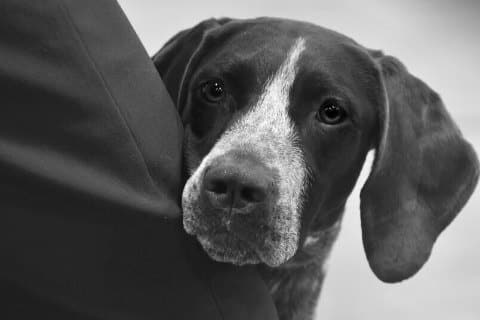
Dr. Michelle Wiberg | The Breeder/Owner Handler
Explore the journey of Dr. Michelle Wiberg, a Breeder/Owner Handler in the world of purebred dogs and her GSPs. Breeder/Owner Handler
Home » Meet The Breeds » German Shorthaired Pointer
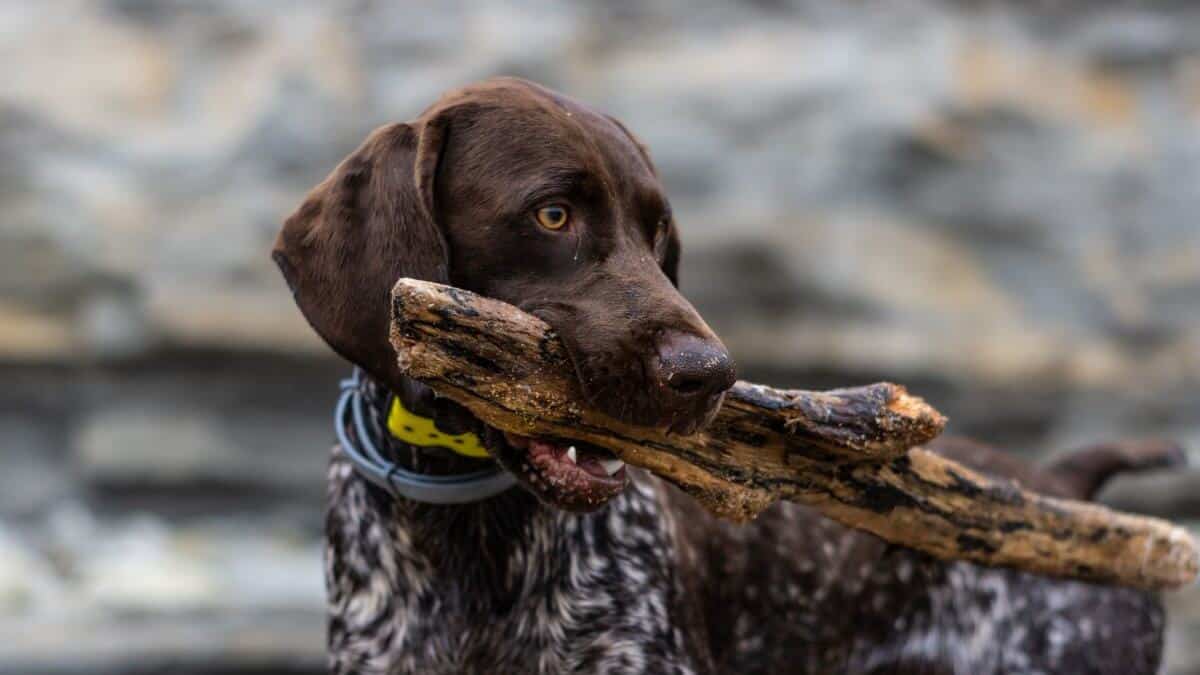
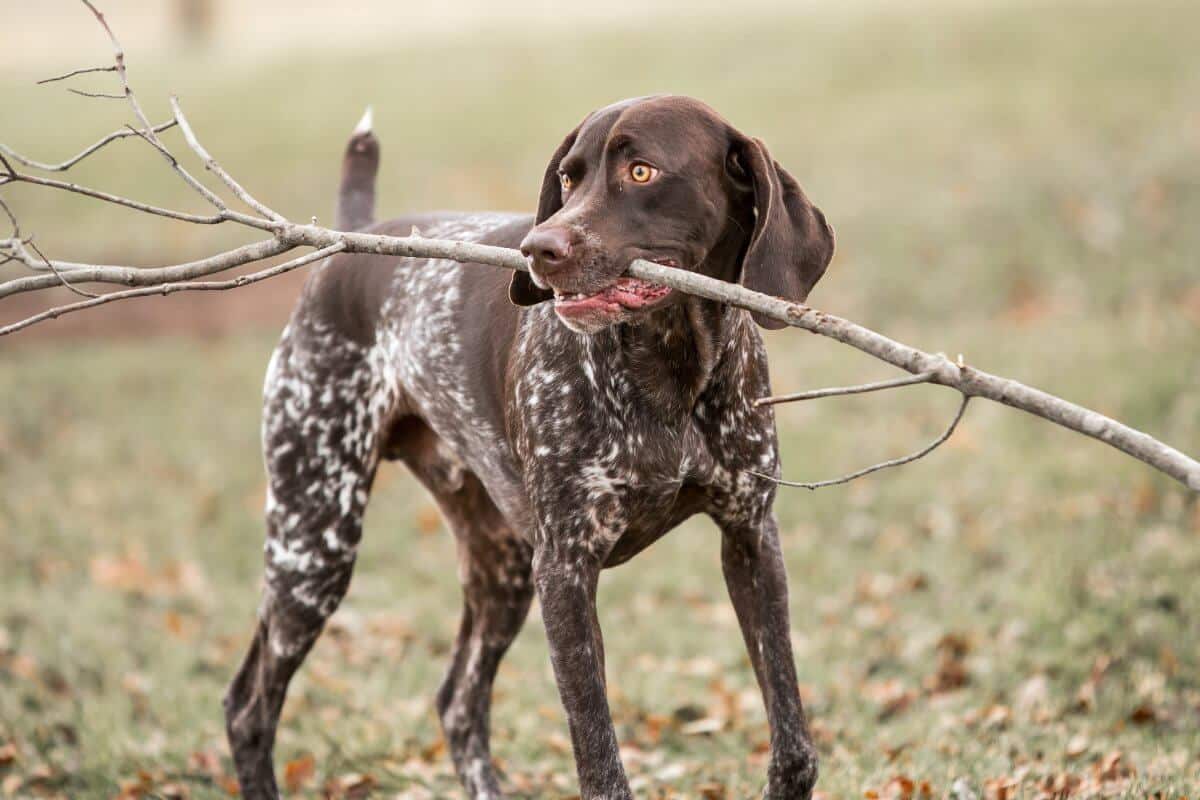
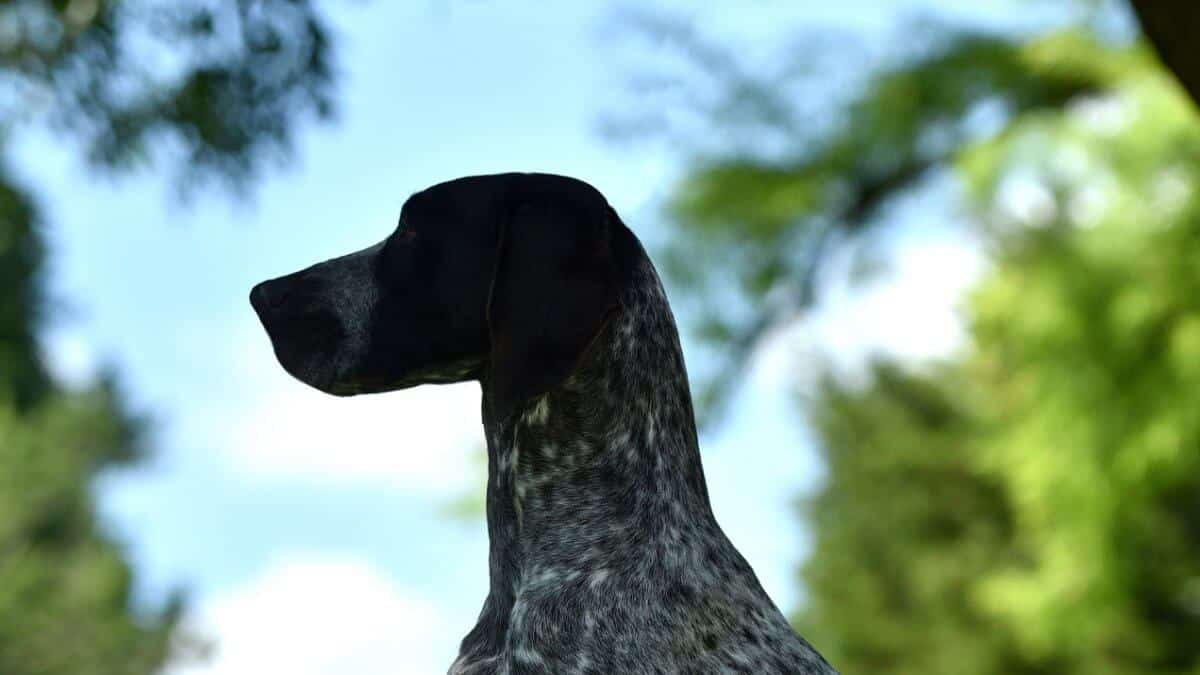
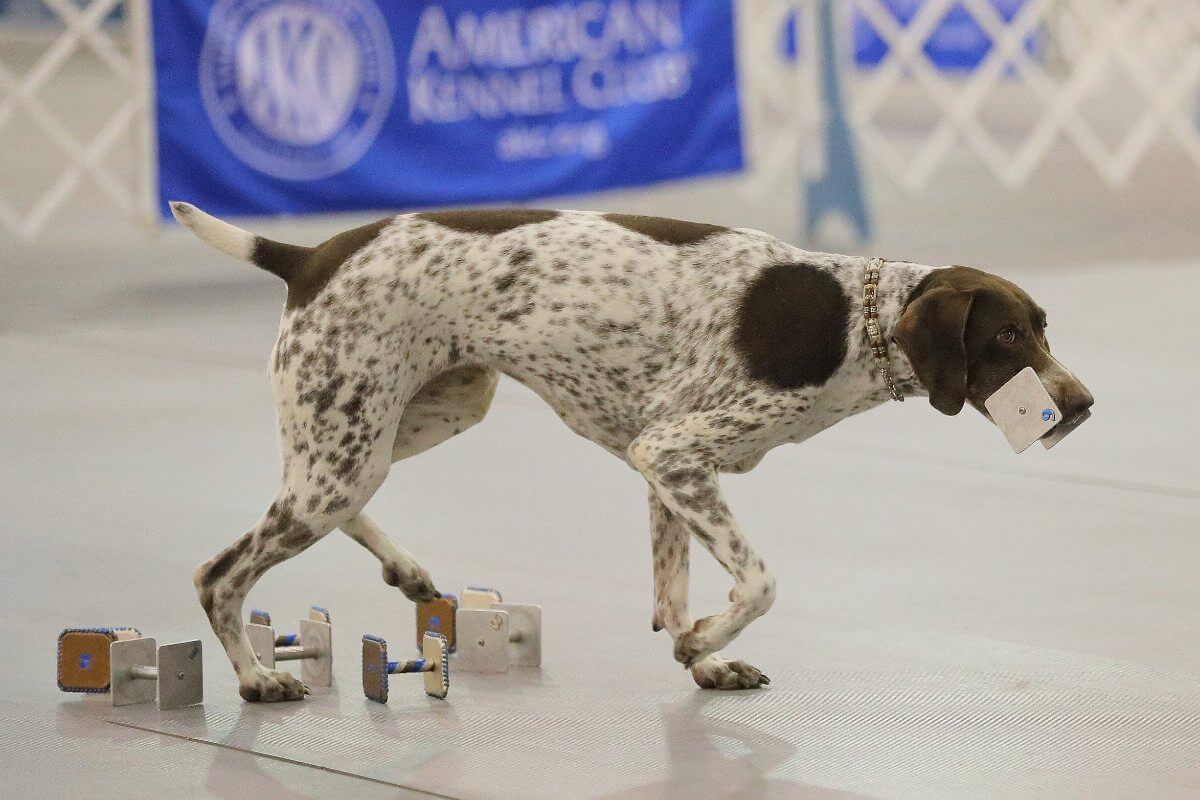
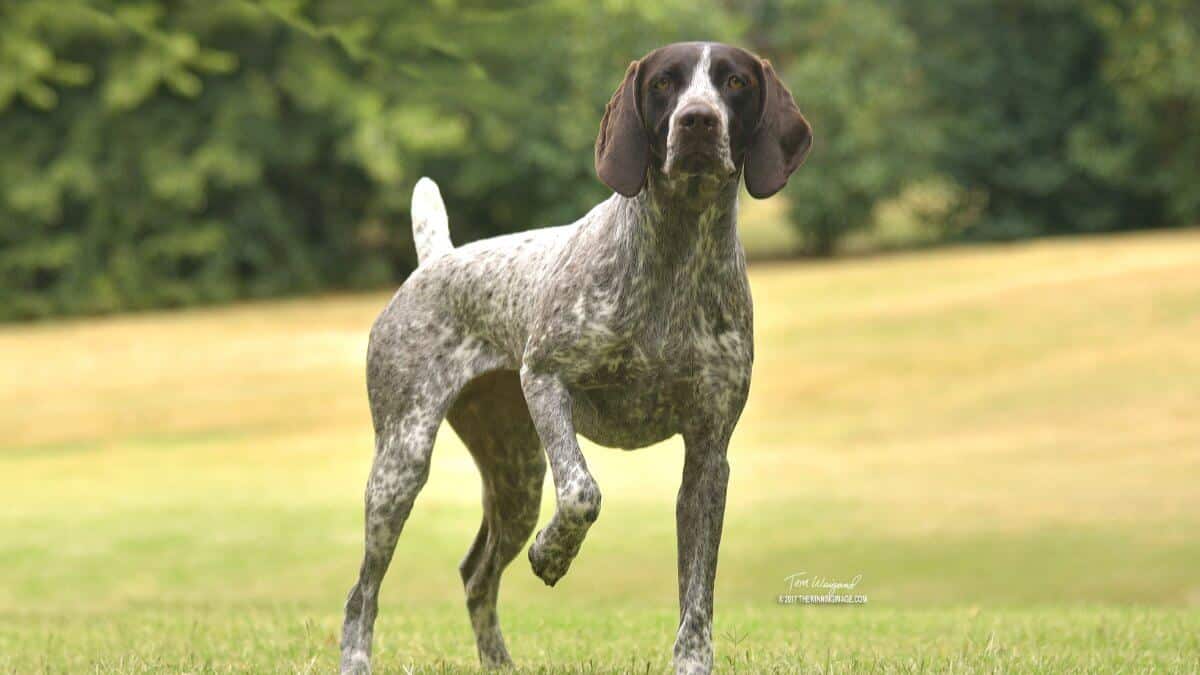
The German Shorthaired Pointer (GSP) is an athletic, intelligent breed developed in 19th-century Germany for hunting on land and water. Renowned for its versatility and friendly nature, the GSP is a loyal companion who thrives in active households.
Sporting
21 – 25 inches
45 – 70 pounds
10 – 12 years
| Country of Origin | Germany |
|---|---|
| Bred For | All-Purpose Hunting, Companionship |
| Known For | Aristocratic Look, Trainability, Versatility |
| Popularity | High |
| Temperament | Friendly, Intelligent, Willing to Pleas |
| Activities | Hunting, Running, Hiking, Swimming, Conformation Shows, Dog Sports |
The German Shorthaired Pointer has roots dating back to 17th-century Germany. The breed’s development in its modern form began in the mid-to-late 19th century, with breeders striving to create a versatile hunting dog. By crossing Spanish Pointers with local bird dogs, Bloodhounds, and later, English Pointers, they refined the GSP into a highly adaptable hunter capable of tracking, pointing, and retrieving on both land and water.
Prince Albrecht zu Solms-Braunfeld of the Royal House of Hanover played a significant role in establishing a Breed Standard. He emphasized traits like intelligence, endurance, and versatility, shaping the GSP into a reliable hunting companion.
The first GSPs were imported to the United States in 1925 by Dr. Charles Thornton of Montana. In 1930, the American Kennel Club (AKC) officially recognized the breed, with Grief v.d. Fliegerhalde as the first registered GSP.
World War II posed significant challenges to the breed in Europe. To protect valuable bloodlines, breeders relocated some dogs to neighboring countries like Yugoslavia, though the limited gene pool in post-war Germany made recovery efforts difficult. Conversely, the breed thrived in the US where it gained popularity for its performance in both Field Trials and Conformation Shows. By 1968, GSPs dominated AKC National Field Trial Championships, with three of the top four finishers also holding Conformation titles.
Today, the German Shorthaired Pointer is one of the most popular Sporting breeds in the United States, consistently ranking among the top 10 most registered breeds with the AKC. This popularity reflects the breed’s adaptability, intelligence, and suitability as both a hunting partner and a family companion.
Male German Shorthaired Pointers typically stand 23 to 25 inches tall at the shoulder and weigh between 55 and 70 pounds. Females are slightly smaller, standing 21 to 23 inches tall and weighing 45 to 60 pounds.
The German Shorthaired Pointer is a medium to large breed with a muscular and well-proportioned body. In profile, the GSP may appear square or slightly rectangular when measured from the forechest to the rearmost projection of the rump. A deep chest and a tuck-up, and a firm, slightly arched topline, contribute to its sturdy yet elegant structure, ensuring strength and stamina in the field.
Texture: The coat of the German Shorthaired Pointer is short, dense, and tough to the touch. Its thickness provides protection in the underbrush and insulation in water. The hair on the head and ears is softer and finer, while the coat on the underside of the tail and back of the haunches may be somewhat longer; however, long or soft coats are undesirable.
| Standard Color | |
|---|---|
| Liver | y |
| Liver & White | y |
| Liver Roan | y |
| White & Liver | y |
| Black & White | y |
| Black | y |
| Black Roan | y |
| Standard Marking | |
|---|---|
| Patched | y |
| Ticked | y |
| Patched & Ticked | y |
A Note About Color: Any other color or combination of colors is unacceptable in the breed, including but not limited to red, orange, lemon, tan, and solid white.

The German Shorthaired Pointer’s tail is set high and firm. The tail is docked to about 40 percent of its natural length, a practice tied to hunting utility. In countries where the practice is prohibited, the natural tail tapers to a fine point. When at rest, the tail hangs naturally, but when the dog is moving it may be carried slightly above the topline without curving over the back towards the head.
The German Shorthaired Pointer is an energetic and intelligent breed that thrives in active households. They require dedicated time for exercise, training, and mental stimulation. Understanding their health, personality, and care needs is essential before welcoming one into the home.
German Shorthaired Pointers are generally healthy dogs with an average lifespan of 10 to 12 years. Proper care, a balanced diet, and regular exercise contribute to their well-being, but like all dogs, they can be prone to certain health conditions.
German Shorthaired Pointers may be predisposed to the following health issues:
The German Shorthaired Pointer is an energetic, intelligent, and loyal breed that thrives in active and attentive homes. These dogs can be well-suited for novice owners who are dedicated to providing consistent training and exercise. The sensitivity of the GSP to human emotions makes them deeply affectionate and eager to please, but they can struggle with being left alone for extended periods.
These dogs are typically friendly towards children, though their exuberance can overwhelm younger kids. With strangers, they are generally amiable, but they retain a strong protective instinct, making them reliable watchdogs. Their playful and curious nature ensures they are always engaged, making them delightful family companions for active households. When properly socialized from an early age, they typically get along well with other dogs and household pets.
German Shorthaired Pointers are active dogs requiring a high-quality diet to fuel their energy and maintain their health. Puppies need specially formulated puppy food that is rich in proteins and essential nutrients to support rapid growth. Feeding three to four small meals a day is recommended until they transition to adult food.
For adult GSPs, two balanced meals per day are sufficient. The amount of food depends on the dog’s size, age, and activity level, with active dogs requiring up to three cups of kibble daily. Caretakers should monitor weight closely, as overfeeding can lead to obesity and associated health issues.
As they age, senior Shorthairs benefit from a diet tailored to their changing nutritional needs, with lower calories and joint-supporting supplements. Access to fresh water at all times is essential, particularly for these active dogs. Consulting a dog’s breeder and veterinarian for personalized dietary recommendations can ensure optimal nutrition at every life stage.
German Shorthaired Pointers are highly intelligent and eager to learn, making them relatively easy to train for experienced handlers. However, their independence and high energy levels require patience, consistency, and positive reinforcement techniques. Early socialization and basic obedience training are critical to fostering a well-mannered dog.
The breed’s tendency to bark and alert the family makes the GSP a natural watchdog, but this behavior should be managed through training to prevent excessive barking. These dogs have a strong prey drive and need to run, so recall training and a secure yard are vital for keeping them safe. They thrive on mental challenges and excel in activities like Agility, Tracking, and Scent Work.
The German Shorthaired Pointer is a high-energy breed that requires vigorous daily exercise to maintain physical and mental health. A minimum of 60 to 90 minutes of activity per day is recommended, including long walks, strenuous runs, and play sessions. These dogs excel in high-intensity activities like running, swimming, and dog sports that challenge their stamina and intelligence.
| Energy Level | High |
|---|---|
| Exercise Requirements | 2 Hours/Day (Minimum), Daily Walks, Vigorous Running, Regular Exercise, Occasional Swimming, Playing with Another Dog, Mental Stimulation |
Their playful and energetic nature makes them excellent companions for active individuals or families. Without sufficient exercise, GSPs may become restless, leading to unwanted behaviors such as excessive barking or chewing. Engaging them in mentally stimulating games, such as puzzle toys or hide-and-seek, is equally important for preventing boredom.
The German Shorthaired Pointer’s short, dense coat is low-maintenance but still benefits from regular care. Weekly brushing helps to remove loose hair, distribute natural oils, and keep the coat sleek and shiny. Shedding increases during seasonal changes, so more frequent brushing may be needed at those times.
| Coat Type | Short, Dense, Rough |
|---|---|
| Grooming Requirements | Weekly Brushing, Occasional Bathing, Routine Ear Cleaning, Periodic Nail Trimming, Regular Tooth Brushing |
Bathing should be done only when necessary, using a gentle dog shampoo to maintain the natural oils in the coat. The hanging ears require regular cleaning to prevent wax buildup and infections, as moisture can easily get trapped. Nails should be trimmed regularly to avoid discomfort, and teeth should be brushed frequently to promote good oral health.
The German Shorthaired Pointer thrives in homes where they are included as an active part of the family. They adapt well to suburban or rural environments, especially in homes with a fenced yard to accommodate their need for physical activity. Apartment living is possible but requires a strong commitment to daily exercise and mental engagement.
GSPs handle moderate climates well but may struggle in extreme cold or heat. Providing appropriate shelter, hydration, and weather-appropriate gear ensures their comfort. These dogs form close bonds with their human companions and prefer not to be left alone for long periods, as they can develop separation anxiety.
German Shorthaired Pointer puppies are energetic, curious, and quick to learn, making early socialization and basic training essential. Proper care, including a nutritious diet, regular vet visits, and safe, age-appropriate exercise will promote healthy development.
Caring for a GSP puppy involves feeding a high-quality, balanced diet served in three to four small meals daily, transitioning to two meals as the pup matures. Early training, including crate training, aids with housebreaking and provides a secure space for rest periods throughout the day.
Short walks and gentle playtime support the puppy’s energy needs without straining developing joints. Regular veterinary check-ups, vaccinations, and deworming will ensure a healthy start, setting the stage for a long, happy, and active life.
The German Shorthaired Pointer is recognized by the world’s leading registries and kennel organizations, which categorize the breed into a specific Group based on its unique characteristics. This breed is recognized worldwide under the following Group designations:
| Organization | Group Designation |
|---|---|
| AKC (American Kennel Club) | Sporting |
| UKC (United Kennel Club) | Gun Dog |
| CKC (Canadian Kennel Club) | Sporting Dogs |
| ANKC (Australian National Kennel Council) | Gundogs |
| RKC (The Royal Kennel Club) | Gundog |
| FCI (Fédération Cynologique Internationale) | Group 7 – Pointing Dogs; Section 1.1 – Continental Pointing Dogs |
The ideal German Shorthaired Pointer is described by a Breed Standard that is approved by each of the world’s leading registries and kennel organizations. The Breed Standards for this breed may be found in the following links:
| Organization | Breed Standard |
|---|---|
| American Kennel Club | AKC German Shorthaired Pointer Breed Standard |
| United Kennel Club | UKC German Shorthaired Pointer Breed Standard |
| Canadian Kennel Club | CKC German Shorthaired Pointer Breed Standard |
| Australian National Kennel Council | ANKC German Shorthaired Pointer Breed Standard |
| The Royal Kennel Club | RKC German Shorthaired Pointer Breed Standard |
| Fédération Cynologique Internationale | FCI German Shorthaired Pointer Breed Standard |
German Shorthaired Pointer rescue organizations play a vital role in providing second chances for dogs in need. These groups focus on rescuing, rehabilitating, and rehoming GSPs while educating the public on responsible ownership.
Yes, the German Shorthaired Pointer sheds moderately year-round, with heavier shedding in spring and fall. Regular grooming helps to manage shedding during these seasons.
No, the GSP is not hypoallergenic and can trigger allergies due to the dander. Bathing can help to reduce allergens.
The Shorthair can reach speeds of 40-45 mph. This makes the breed an excellent choice for hunting and active companionship.
With proper care, including diet, exercise, and veterinary check-ups, the lifespan of the GSP is typically 10-12 years.
Males are 23-25 inches tall and weigh 55-70 pounds; females are slightly smaller at 21-23 inches and 45-60 pounds.
The typical German Shorthair is friendly and intelligent, making it a great family member for those who can meet the breed’s exercise needs.
GSPs can jump up to 5-6 feet, so secure fencing is essential for their safety.
The German Shorthaired Pointer stops growing in size by 1.5-2 years, but may continue to build muscle for another six to 12 months.

Explore the journey of Dr. Michelle Wiberg, a Breeder/Owner Handler in the world of purebred dogs and her GSPs. Breeder/Owner Handler

Dr. Michelle Wiberg is the breeder behind Chrishelle German Shorthaired Pointers. Read about the kennel’s beginnings, puppies, and much more!

Explore the journey of Dr. Michelle Wiberg, a Breeder/Owner Handler in the world of purebred dogs and her GSPs. Breeder/Owner Handler

Dr. Michelle Wiberg is the breeder behind Chrishelle German Shorthaired Pointers. Read about the kennel’s beginnings, puppies, and much more!

Sharon & Steve Dattilio, Kahla Ennis are the breeders behind Shomberg German Shorthaired Pointers. Read about the kennel.

Jennifer Murphy is the breeder behind White Oak Kennels German Shorthaired Pointers. Read about the kennel’s beginnings, puppies, and more!

Valerie Nunes-Atkinson is the breeder behind the VJK-MYST Kennels. Read about the kennel’s beginnings, the sires, the dams, and more!

Christy Hale is the breeder behind Halestorm Kennel. Read about the kennel’s beginnings, the sires, the dams, the puppies, and more!
The best way to ensure a long and happy relationship with a purebred dog is to purchase one from a responsible breeder. Not sure where to begin?
Contact the National Parent Club’s Breeder Referral Program, which is listed on the AKC Breeder Referral Contacts page.
